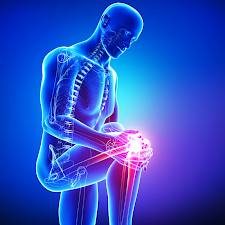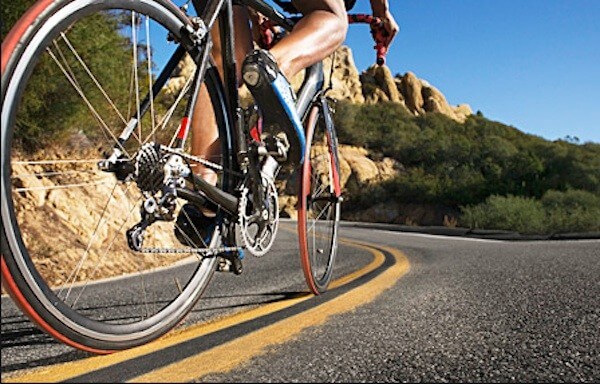
Whether you are a novice or a pro, you might feel the need to improve upon your current bike skills and techniques. As with any form of exercise, how you do it determines how successful the endeavor will be. Luckily for cyclists everywhere, cycling is pretty straightforward and as a result, practically no skill is impossible to master! No matter what you are hoping to improve, from your pre-ride checklist to following the right interval routines, here are 6 tips to improve your bike skills today.
Bike Skills – Do the Pre-ride Checklist
One of the key factors to improving your bike skills is to get your pre-ride checklist in place. It may sound like an unnecessary factor when you want to improve the way that you ride, but if you consider the affect that overlooking a simple mechanical factor can have on your bike and body, you might think again! Simply forgetting to check a small detail on your bike, such as retightening the stem bolts, can lead to more than one complication after you set off, so it’s better to be safe than sorry.
Bike Skills – Improve Your Shifting
Learning how to shift properly will improve your bike skills by allowing you to maintain speed in the right gear. Anticipation really is the key. You might feel like you have a good grip on shifting correctly, but transitioning too soon can really affect your overall ride. Always attempt to change gears just before you need to. Try not to let your legs get bogged down by too big of a gear. Shift at the dead spot of your pedal stroke where your feet are at the 12 o’clock and 6 o’clock positions. The less pressure that you put on the pedals will allow your gears to shift quickly without any large “clunks”.
Bike Skills – Improve Your Comfort
Cycling isn’t just about getting on your bike and riding. For many of us, cycling is a way to get fit, let off steam, or even to compete. While doing it though you not only want to have a comfortable fit on the bike but should be comfortable riding on roads, trails, in traffic, through corners; basically in any situation on the bike. If you’re uncomfortable and tense, you’re not going to enjoy the ride as much as you otherwise would. The first thing to remember is to relax when you ride. Being tense will simply amplify all of the lumps and bumps of the ride along with your nervousness. You should practice and focus on riding more in the situations that make you uncomfortable. If you’re nervous on descents, practice your braking and cornering. If you’re not comfortable riding in traffic, make sure you’re doing the right things and being safe about it. Being comfortable on the bike will improve your enjoyment of riding.
Bike Skills – Intervals Made Easy
Many cyclists are using aerobic interval training when cycling, especially when trying to lose weight or to increase stamina. Cycling with intervals allows you to burn more calories in a shorter period of time and improves aerobic capability at a faster rate than any other form of cycling. To get to grips with intervals, try the following sets:
- 2 minutes hard, 2 minutes easy
- 1 minute hard, 1 minute easy
- 30 seconds hard, 30 seconds easy
- 15-second sprint, 5 minutes easy
These are perfect for beginners, and can be used in sets throughout a training session for more advanced riders, too. Just gradually add a set or two of each every week.
Bike Skills – Eat Properly
Food is a key element to the quality of your ride as having too little or too much to eat will affect your performance. Aim to eat around 90 minutes before you set out for a long ride to ensure that you digest the food before beginning and don’t run out of energy during the ride. Also, make sure you bring enough food for the ride to keep your energy levels up. It depends on how long you’re riding but rides over 30 minutes to an hour, you should be bringing something to snack on.
Bike Skills – Drink Responsibly
Always bring water or a sports drink with you when you ride no matter how long you plan to be out. When exercising, even in cold weather, your body is losing fluid. The more dehydrated you are, the hard your body is going to have to work to sustain the same pace. The trick is to drink before you’re thirsty as if you’re thirsty, it’s too late; you’re already playing catch-up.
You should also aim to drink in a responsible manner. Glance at your drinks bottle when you want a sip but don’t take your eyes off of the road to reach down for it. Always tilt the bottle to drink and if an obstacle appears while you have a bottle to hand, hold it between your teeth while you grab back on to the bars. This may sound dangerous but having two hands on your bike to ride a bump will be much safer for you than only holding on with one. And make sure you don’t let go of the bottle before it’s securely in the bottle cage otherwise it’ll be on the road before you know it.
These are a few quick and easy bike skills to practice and get good at as they will up the quality of your rides. What other bike skills do you practice to improve your riding? Let us know in the comments below.
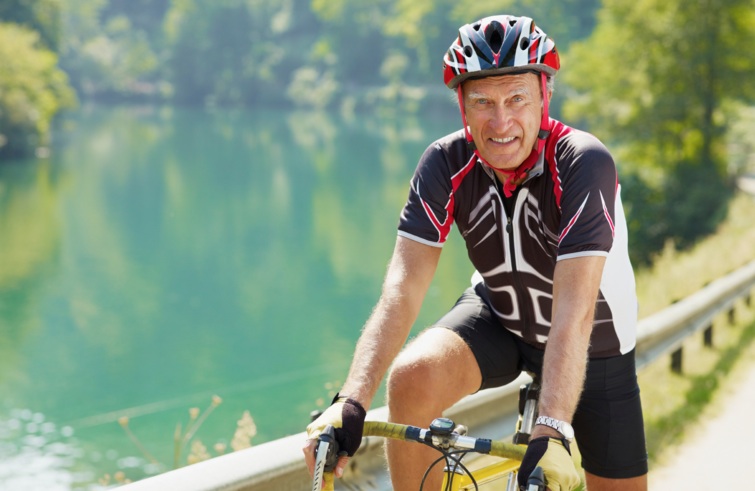
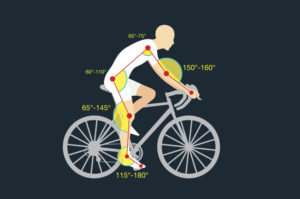
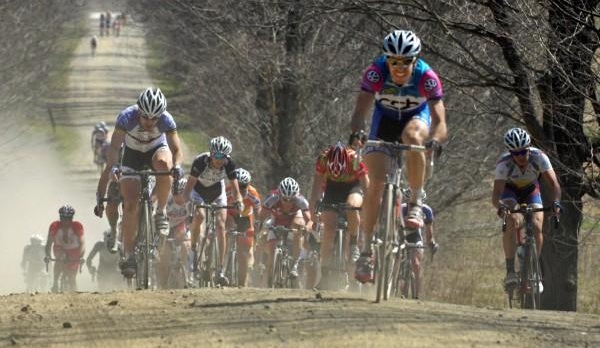
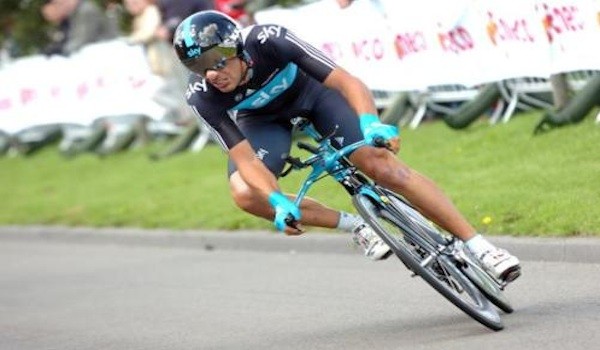 Riding a bike comes with the amazing potential to be able to do more than just go down the street or trail at a quicker pace than walking or running. With riding you can go fast enough and maneuver enough to give you a feeling unlike that of any other. Your heart pumps, the adrenaline flows, you can feel the excitement of what you just rode. You could have crashed but you didn’t. You had the skills to not only get through it but to get through it with style. These few tips will help you ride through corners better and with more confidence.
Riding a bike comes with the amazing potential to be able to do more than just go down the street or trail at a quicker pace than walking or running. With riding you can go fast enough and maneuver enough to give you a feeling unlike that of any other. Your heart pumps, the adrenaline flows, you can feel the excitement of what you just rode. You could have crashed but you didn’t. You had the skills to not only get through it but to get through it with style. These few tips will help you ride through corners better and with more confidence.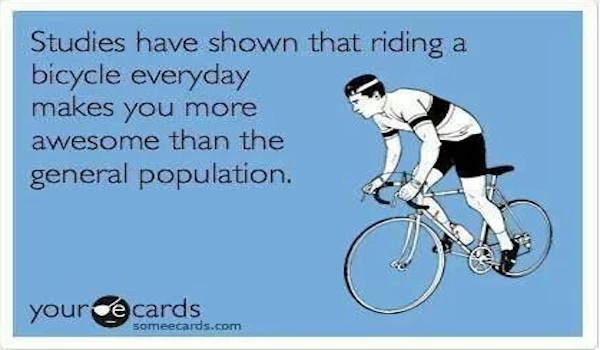 Cycling for beginners can be a scary thing. This guide will give you beginner cycling tips on everything you will need to know to get started. We will cover pedaling, stopping, position, corners, climbing, changing a flat tire, road bikes for beginners, cycling tips for beginners, training, nutrition, injury prevention, bike fit and training plans for beginners!
Cycling for beginners can be a scary thing. This guide will give you beginner cycling tips on everything you will need to know to get started. We will cover pedaling, stopping, position, corners, climbing, changing a flat tire, road bikes for beginners, cycling tips for beginners, training, nutrition, injury prevention, bike fit and training plans for beginners!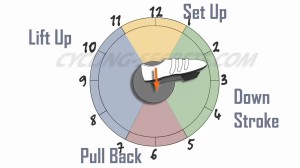
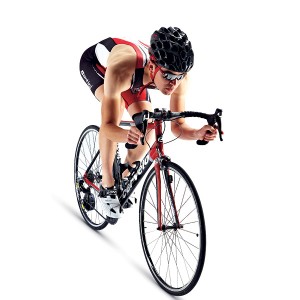 Stopping your bike is likely the most important thing you can learn. Clearly, if you squeeze the brakes you are going to slow down and eventually stop, but there are different techniques involved.
Stopping your bike is likely the most important thing you can learn. Clearly, if you squeeze the brakes you are going to slow down and eventually stop, but there are different techniques involved.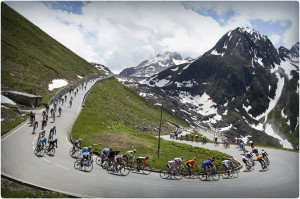 Most beginner cyclists assume they need to turn the handlebars in order to take a corner; while this is the case at very slow speeds it is usually not practiced while taking most corners at speed. Rather you will lean the bike frame the direction you want to turn and adjust your weight accordingly.
Most beginner cyclists assume they need to turn the handlebars in order to take a corner; while this is the case at very slow speeds it is usually not practiced while taking most corners at speed. Rather you will lean the bike frame the direction you want to turn and adjust your weight accordingly.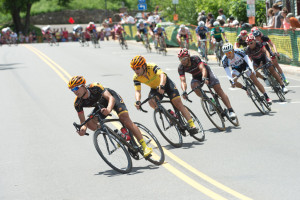 You should be going the speed you want to go around the corner at the beginning of the turn. Braking in the turn actually makes the bike want to stand up on itself and straighten out, two things you are trying not to do. You end up fighting the bike and shedding more speed than necessary to make the turn safely.
You should be going the speed you want to go around the corner at the beginning of the turn. Braking in the turn actually makes the bike want to stand up on itself and straighten out, two things you are trying not to do. You end up fighting the bike and shedding more speed than necessary to make the turn safely.
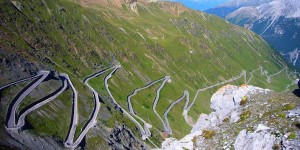 The most important aspect of hill climbing is maintaining a steady effort from the bottom all the way to the top. This is a difficult thing to achieve. If you have a heart rate monitor there is a lag of approximately thirty seconds to one minute – keep this in mind. If you are going off of perceived effort – the beginning of the hill is perceptively easy and top seems incredibly difficult at the same effort. Power meters are the only way of receiving instantaneous feedback of your actual effort.
The most important aspect of hill climbing is maintaining a steady effort from the bottom all the way to the top. This is a difficult thing to achieve. If you have a heart rate monitor there is a lag of approximately thirty seconds to one minute – keep this in mind. If you are going off of perceived effort – the beginning of the hill is perceptively easy and top seems incredibly difficult at the same effort. Power meters are the only way of receiving instantaneous feedback of your actual effort.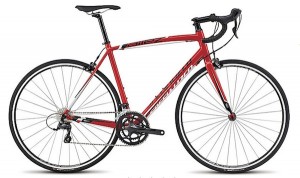
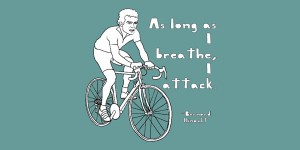
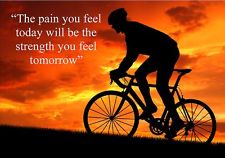 Interval Training
Interval Training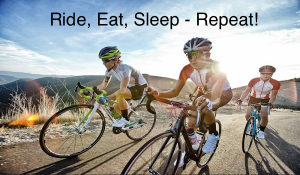 What to Eat on a Long Ride
What to Eat on a Long Ride